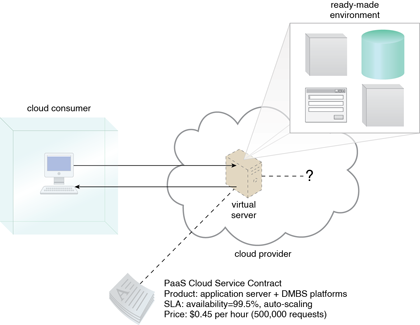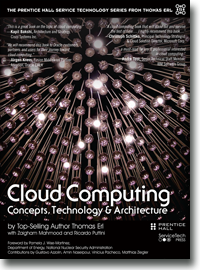Cloud Computing Patterns, Mechanisms > Basics > Cloud Delivery Models > Platform-as-a-Service (PaaS)
Platform-as-a-Service (PaaS)
The PaaS delivery model represents a pre-defined “ready-to-use” environment typically comprised of already deployed and configured IT resources. Specifically, PaaS relies on (and is primarily defined by) the usage of a ready-made environment that establishes a set of pre-packaged products and tools used to support the entire delivery lifecycle of custom applications.
Common reasons a cloud consumer would use and invest in a PaaS environment include:
- The cloud consumer wants to extend on-premise environments into the cloud for scalability and economic purposes.
- The cloud consumer uses the ready-made environment to entirely substitute an on-premise environment.
- The cloud consumer wants to become a cloud provider and deploys its own cloud services to be made available to other external cloud consumers.
By working within a ready-made platform, the cloud consumer is spared the administrative burden of setting up and maintaining the bare infrastructure IT resources provided via the IaaS model. Conversely, the cloud consumer is granted a lower level of control over the underlying IT resources that host and provision the platform (Figure 1).
PaaS products are available with different development stacks. For example, Microsoft Azure provides a .NET-based environment, while Google App Engine offers a Java and Python-based environment.

Figure 1 – A cloud consumer is accessing a ready-made PaaS environment. The question mark indicates that the cloud consumer is intentionally shielded from the implementation details of the platform.
PaaS products are available with different development stacks. For example, Google App Engine offers a Java and Python-based environment.

